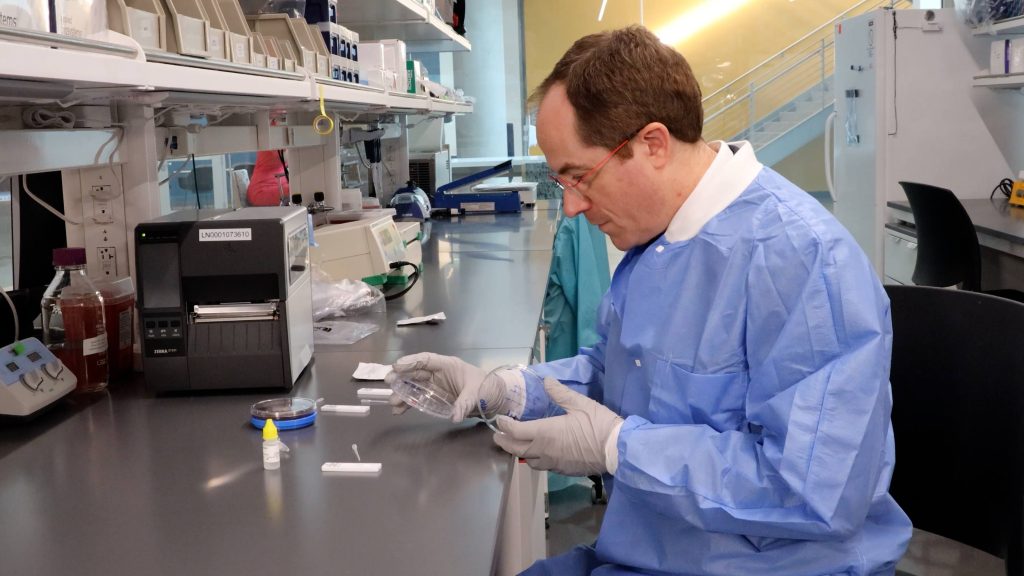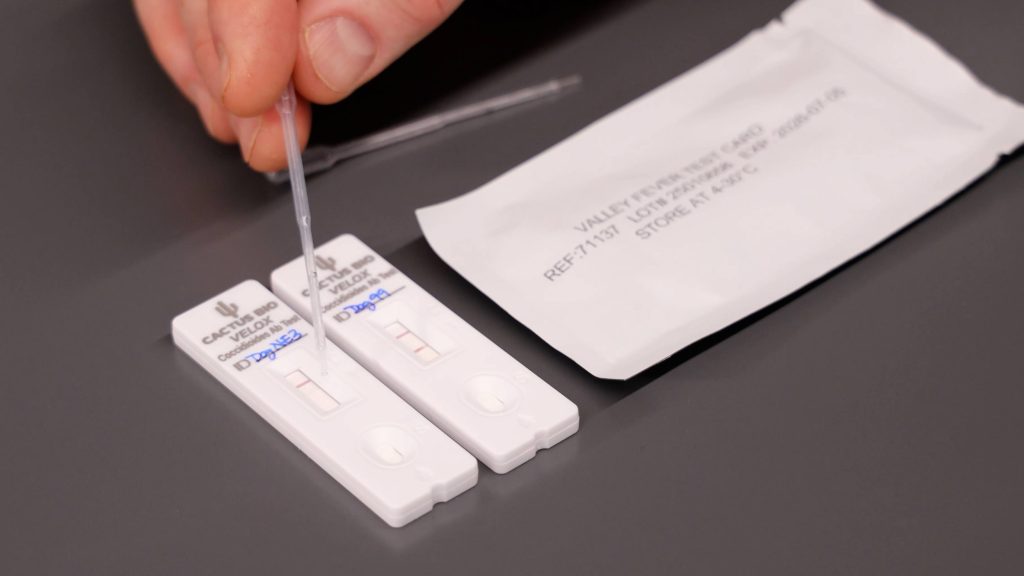A new test in development at Mayo Clinic could help doctors diagnose valley fever faster, possibly at the first visit. Also known as coccidioidomycosis, valley fever is a lung infection caused by breathing in a fungus found in dry, dusty soil, especially in the Southwest.
Many people have no symptoms, but in some cases, the infection can spread to the brain, bones, or spine and become life-threatening. Because symptoms often mimic the flu or pneumonia, valley fever is frequently misdiagnosed. Current tests can be slow and unclear, delaying the right treatment.
Dr. Thomas Grys, a Mayo Clinic researcher working in collaboration with Arizona State University, is developing next-generation tools to detect valley fever earlier and more accurately. The goal is to help patients get answers and early treatment.
Here's how Mayo Clinic is advancing the future of valley fever diagnoses.
Watch: Faster diagnosis for valley fever with new test in development
Journalists: Broadcast-quality video (1:55) is in the downloads at the end of this post. Please courtesy: "Mayo Clinic News Network." Read the script
From the vast deserts of the Southwest to the laboratory of Dr. Thomas Grys at Mayo Clinic in Arizona, microscopic fungal spores of valley fever are the focus of research.
"Spores are kind of like the seeds of the fungus. They are very durable. They can exist and persist in the environment. And they're tiny, so they float in the air and we can breathe them in," says Dr. Grys.

Each year, up to 3% of people in the Southwest are exposed to infection and develop antibodies, no matter how long they’ve lived there. Dr. Grys says valley fever infections are common, but the current diagnostics could be better.
"And one of the most frustrating things is, if someone has symptoms of a brain infection with valley fever, it's difficult to confirm whether they have that in their brain or not, and if they do, they're going to be on antifungal medications for the rest of their life. We cannot cure it from the brain," he says.
Rapid test
That's why this rapid antibody test being developed — similar in format to a COVID-19 test — is so important.

"The test we're working on can detect antibodies in 10 minutes. We still have to wait for the body to respond to the fungus, but once it does, we can provide answers in 10 minutes," Dr. Grys says.
The shortened time to detect fungal antibodies means that answers could be back in time to inform patient care during their visit.
"Some patients come in four or five times until they figure out what's happening. Every single time going to the doctor, you have to find transportation, you might have to find childcare. It's a burden to have to go in," he says.
And for patients, Dr. Grys says the rapid antibody test could change the paradigm.
"The median time to diagnosis is 23 days. Half of the people take more than 23 days to find out they have valley fever. If we can get testing that's more rapid and get answers faster, people will be more prone to test because a decision can be made while the patient is there," he says.
Availability
The antibody test is licensed to a startup company, and the test is expected to be commercially available for laboratory use by the end of 2025.
Treatment
For advanced cases of valley fever, the Cocci Clinic at Mayo Clinic in Arizona offers a coordinated, multispecialty team — including infectious diseases specialists, pulmonologists, neurologists, dermatologists and cardiothoracic surgeons.







